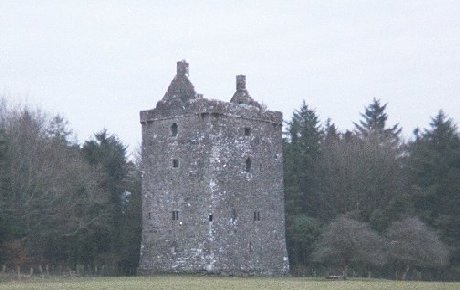
 |
|
Freatgear Castle or Jenning's Castle. |

|
|
This tower was built by the De Burgoes in the 15th century and the De Burgoes lived here
until they were dispossessed by the Cromwellians in 1651. Cromwell
benefactors inhabited the estate and castle itself for a short while until eventually the
lands and castle fell into the hands of the Blakes of Tuam and the Jennings who where living there
where given an estate in Ironpool. As was the practice at the time a more comfortable residence was
built adjacent to the castle. The big house constructed by the Blakes was three storeys high
including the basement. It was a magnificent structure and was one of the finest houses in Co. Galway.
Set in the dense woodland, rich in game and close to Claureen Lake the inhabitants
were never short of prey.
The most famous of its landlords was Edward Blake. The Blakes were protectors of the nearby castle and Edward Blake is said to have created an iron door at the entrance and put up a plaque to commemorate this. In 1886 on the death of Edward, the lands and house were sold to a John Cannon. This branch of the Blakes emigrated and eventually settled in Canada. One of them became a K.C. (Kings council) and was a member of the Old Irish parliament in 1889 being an M.P. for Co. Longford. John Cannon the new landlord was a weaver's son who came from Eyrecourt Co. Galway. He bought the estate for the sum of £1,847. Cannon owned the land in three other countries and had a grand total of 5,973 acres. Thomas Fredrick Lewin an agent and landowner from Blindwell inherited the house and lands. Lewin resided in the castle until July 1922. During the Troubles the house was attacked and burnt. According to local tradition Lewin escaped through a secret passage and boarded at train at the local Castlegrove station and was never seen again. Over the years most of the stone from the house was removed and little remains of this wonderful mansion today. Fig trees, pear trees and raspberry bushes still grow in its environs and are a reminder of a once glorious past. |
| Click here to go back to Buildings Page |